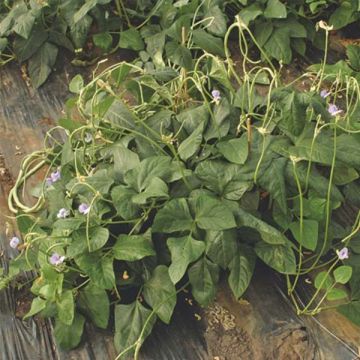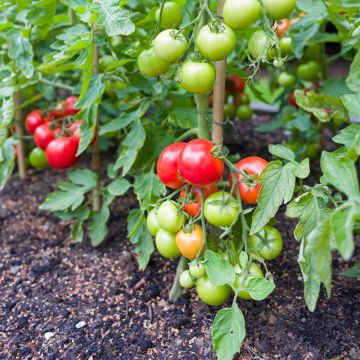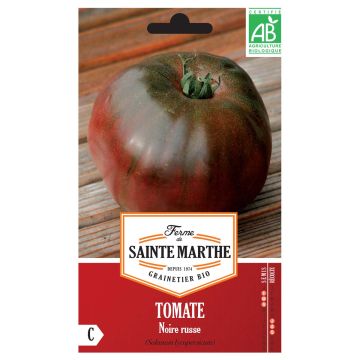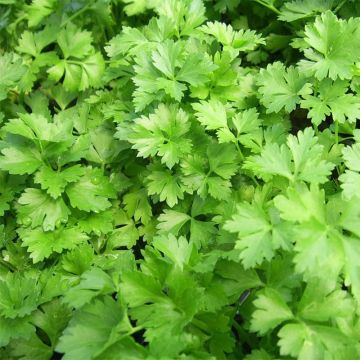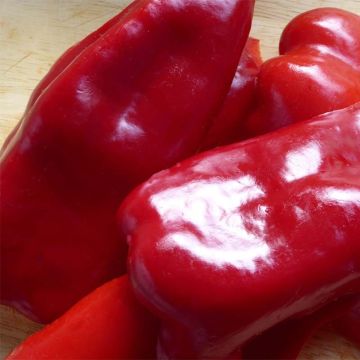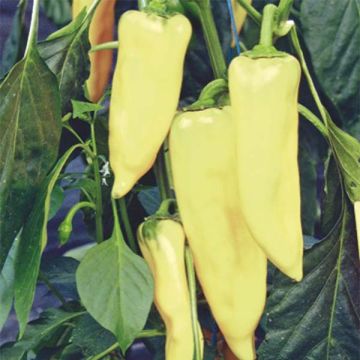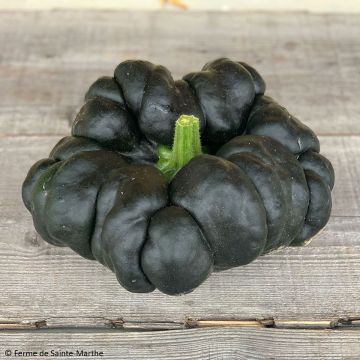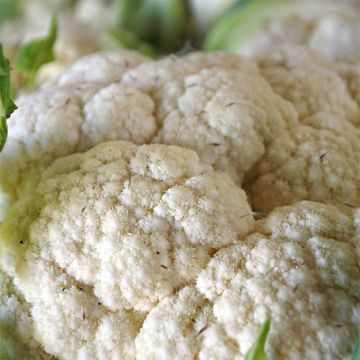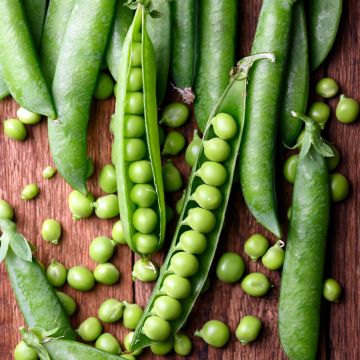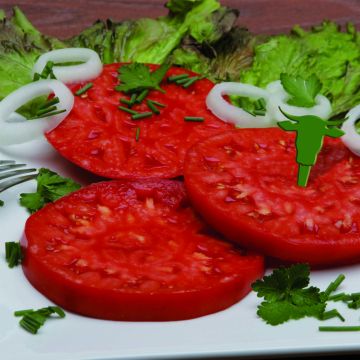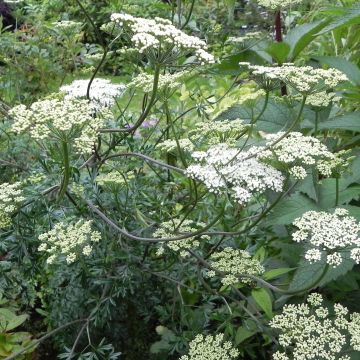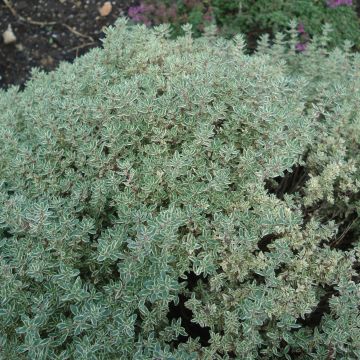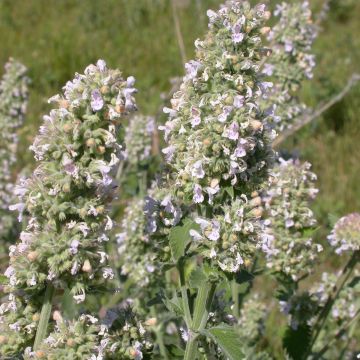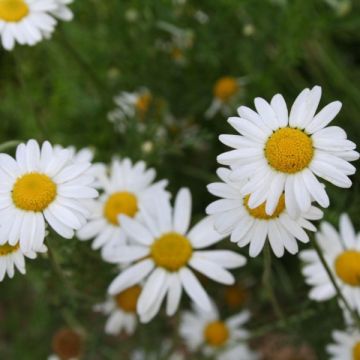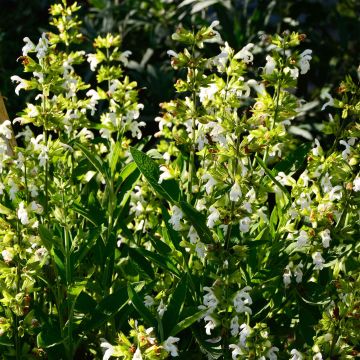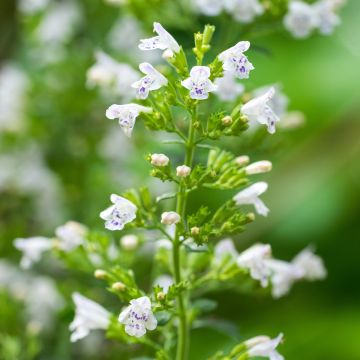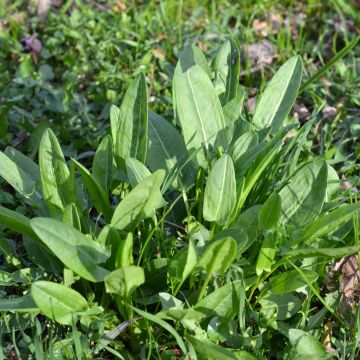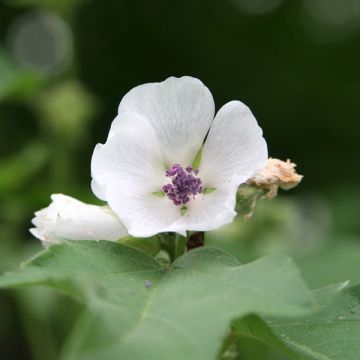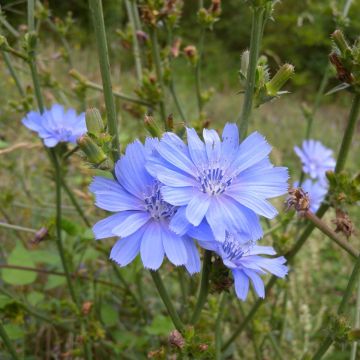

Lippia dulcis - Aztec Sweet Box
Lippia dulcis
Aztec Sweet Box, Bushy Lippia, Honeyherb
Arriving in winter, therefore in a vegetative rest, the plant did not start again in spring. We are at the very end of May, I don't think it will start again, what a pity.
Claire, 29/05/2023
This item cannot be shipped to the selected country
Delivery charge from €5.90
Delivery charge from €5.90
More information
Schedule delivery date,
and select date in basket
This plant carries a 6 months recovery warranty
More information
We guarantee the quality of our plants for a full growing cycle, and will replace at our expense any plant that fails to recover under normal climatic and planting conditions.
From €5.90 for pickup delivery and €6.90 for home delivery
Express home delivery from €8.90.
From €5.90 for pickup delivery and €6.90 for home delivery
Express home delivery from €8.90.
Description
The Sweet Verbena, also known as 'Aztec Sugar Herb', is an aromatic and medicinal plant, reaching a height of 15 cm (6in). Its mint-scented leaves have a much higher sweetening power than sugar. They are used to sweeten desserts or beverages. Plant in spring in May-June.
The Sweet Verbena (Lippia dulcis) is part of the Verbenaceae family. This herbaceous plant, native to Mexico, was used by the Aztecs under the name Sugar Herb. Indeed, like Stevia, the leaves of Sweet Verbena have a much higher sweetening power than sugar but with a slightly menthol taste. It is a spreading plant, about 15 cm (6in) tall. It produces small white flowers in summer. Its leaves are ovate and rough on the top.
Sweet Verbena can be used for infusions or tea. Hernandulcin is the compound responsible for this sweet flavour. The leaves of Lippia dulcis will also bring a note of camphor to your desserts. The camphor it contains is not recommended for heavy and daily use in children.
This frost-sensitive plant can be grown in the garden, depending on the climate, or in a pot to be brought indoors in winter.
Harvesting: The leaves are harvested from June to October by cutting the stems. Harvest regularly to promote new shoots.
Storage: The leaves can be used fresh or dried. For drying, hang bunches of stems upside down in a dry and airy place. Then store them in airtight jars.
Gardener's Tip: To retain moisture in summer and protect from cold in winter, we recommend mulching the soil with thin successive layers of grass clippings, preferably mixed with dead leaves. This protection keeps the soil moist and limits weeding.
Report an error about the product description
Lippia dulcis - Aztec Sweet Box in pictures
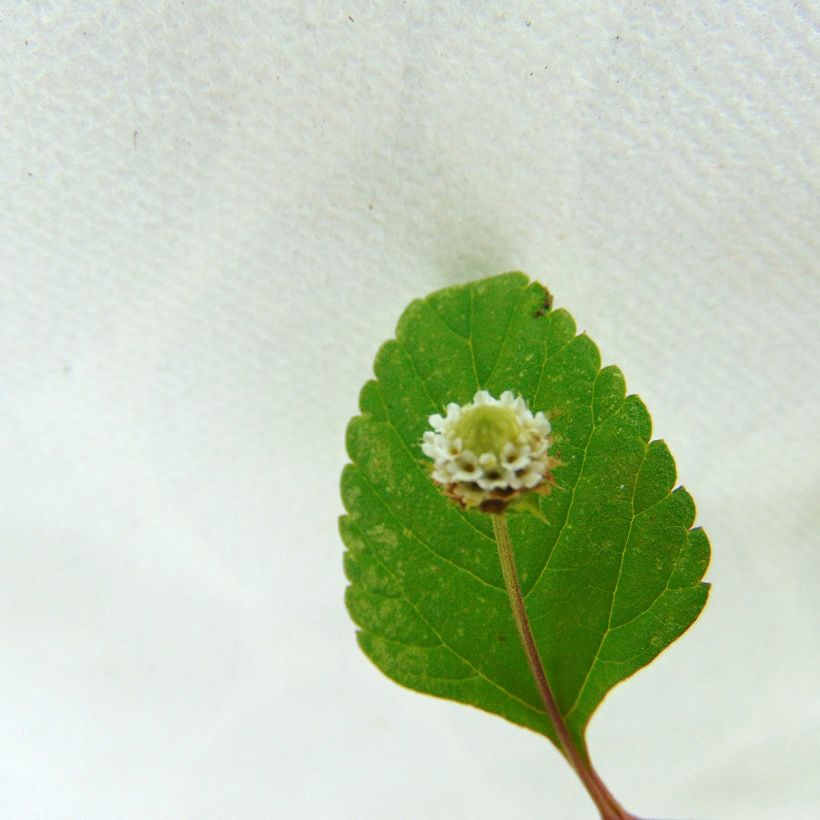

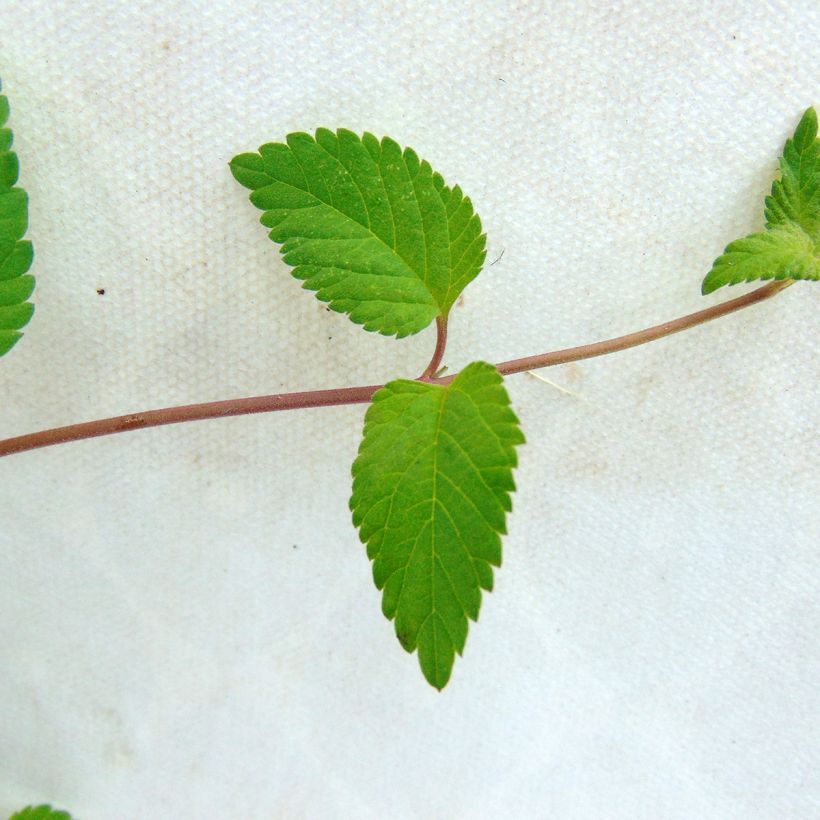

Harvest
Plant habit
Foliage
Other Vegetable garden A to Z
Planting and care
Plant in May-June, either in open ground or in a pot. It is a frost-tender plant that is grown like Lemon Verbena.
It is a good idea to soak the root ball in water just before planting.
In open ground: Plant Sweet Verbena in a sunny location, in rich, well-drained, and moist soil after adding well-rotted compost the previous autumn. If your soil is very wet, put some gravel at the bottom of the planting hole. Dig a hole (3 times the volume of the root ball), place the root ball and backfill with fine soil. Firm and water.
Add compost on the surface every spring. In winter, cover with fleece.
In a pot: Place a layer of gravel or clay balls at the bottom of the pot to aid drainage. Fill the pot with a mixture of potting soil, sand, and garden soil. Place the root ball and fill it with soil. Firmly press and water. Place your pot in the sun and bring it indoors in winter, to a bright location.
At the end of winter, cut back the clump to promote new shoots in spring.
Water regularly and trim back any overly long stems if necessary.
Cultivation
Care
Intended location
-
, onOrder confirmed
Reply from on Promesse de fleurs
Herbs
Haven't found what you were looking for?
Hardiness is the lowest winter temperature a plant can endure without suffering serious damage or even dying. However, hardiness is affected by location (a sheltered area, such as a patio), protection (winter cover) and soil type (hardiness is improved by well-drained soil).

Photo Sharing Terms & Conditions
In order to encourage gardeners to interact and share their experiences, Promesse de fleurs offers various media enabling content to be uploaded onto its Site - in particular via the ‘Photo sharing’ module.
The User agrees to refrain from:
- Posting any content that is illegal, prejudicial, insulting, racist, inciteful to hatred, revisionist, contrary to public decency, that infringes on privacy or on the privacy rights of third parties, in particular the publicity rights of persons and goods, intellectual property rights, or the right to privacy.
- Submitting content on behalf of a third party;
- Impersonate the identity of a third party and/or publish any personal information about a third party;
In general, the User undertakes to refrain from any unethical behaviour.
All Content (in particular text, comments, files, images, photos, videos, creative works, etc.), which may be subject to property or intellectual property rights, image or other private rights, shall remain the property of the User, subject to the limited rights granted by the terms of the licence granted by Promesse de fleurs as stated below. Users are at liberty to publish or not to publish such Content on the Site, notably via the ‘Photo Sharing’ facility, and accept that this Content shall be made public and freely accessible, notably on the Internet.
Users further acknowledge, undertake to have ,and guarantee that they hold all necessary rights and permissions to publish such material on the Site, in particular with regard to the legislation in force pertaining to any privacy, property, intellectual property, image, or contractual rights, or rights of any other nature. By publishing such Content on the Site, Users acknowledge accepting full liability as publishers of the Content within the meaning of the law, and grant Promesse de fleurs, free of charge, an inclusive, worldwide licence for the said Content for the entire duration of its publication, including all reproduction, representation, up/downloading, displaying, performing, transmission, and storage rights.
Users also grant permission for their name to be linked to the Content and accept that this link may not always be made available.
By engaging in posting material, Users consent to their Content becoming automatically accessible on the Internet, in particular on other sites and/or blogs and/or web pages of the Promesse de fleurs site, including in particular social pages and the Promesse de fleurs catalogue.
Users may secure the removal of entrusted content free of charge by issuing a simple request via our contact form.
The flowering period indicated on our website applies to countries and regions located in USDA zone 8 (France, the United Kingdom, Ireland, the Netherlands, etc.)
It will vary according to where you live:
- In zones 9 to 10 (Italy, Spain, Greece, etc.), flowering will occur about 2 to 4 weeks earlier.
- In zones 6 to 7 (Germany, Poland, Slovenia, and lower mountainous regions), flowering will be delayed by 2 to 3 weeks.
- In zone 5 (Central Europe, Scandinavia), blooming will be delayed by 3 to 5 weeks.
In temperate climates, pruning of spring-flowering shrubs (forsythia, spireas, etc.) should be done just after flowering.
Pruning of summer-flowering shrubs (Indian Lilac, Perovskia, etc.) can be done in winter or spring.
In cold regions as well as with frost-sensitive plants, avoid pruning too early when severe frosts may still occur.
The planting period indicated on our website applies to countries and regions located in USDA zone 8 (France, United Kingdom, Ireland, Netherlands).
It will vary according to where you live:
- In Mediterranean zones (Marseille, Madrid, Milan, etc.), autumn and winter are the best planting periods.
- In continental zones (Strasbourg, Munich, Vienna, etc.), delay planting by 2 to 3 weeks in spring and bring it forward by 2 to 4 weeks in autumn.
- In mountainous regions (the Alps, Pyrenees, Carpathians, etc.), it is best to plant in late spring (May-June) or late summer (August-September).
The harvesting period indicated on our website applies to countries and regions in USDA zone 8 (France, England, Ireland, the Netherlands).
In colder areas (Scandinavia, Poland, Austria...) fruit and vegetable harvests are likely to be delayed by 3-4 weeks.
In warmer areas (Italy, Spain, Greece, etc.), harvesting will probably take place earlier, depending on weather conditions.
The sowing periods indicated on our website apply to countries and regions within USDA Zone 8 (France, UK, Ireland, Netherlands).
In colder areas (Scandinavia, Poland, Austria...), delay any outdoor sowing by 3-4 weeks, or sow under glass.
In warmer climes (Italy, Spain, Greece, etc.), bring outdoor sowing forward by a few weeks.

































